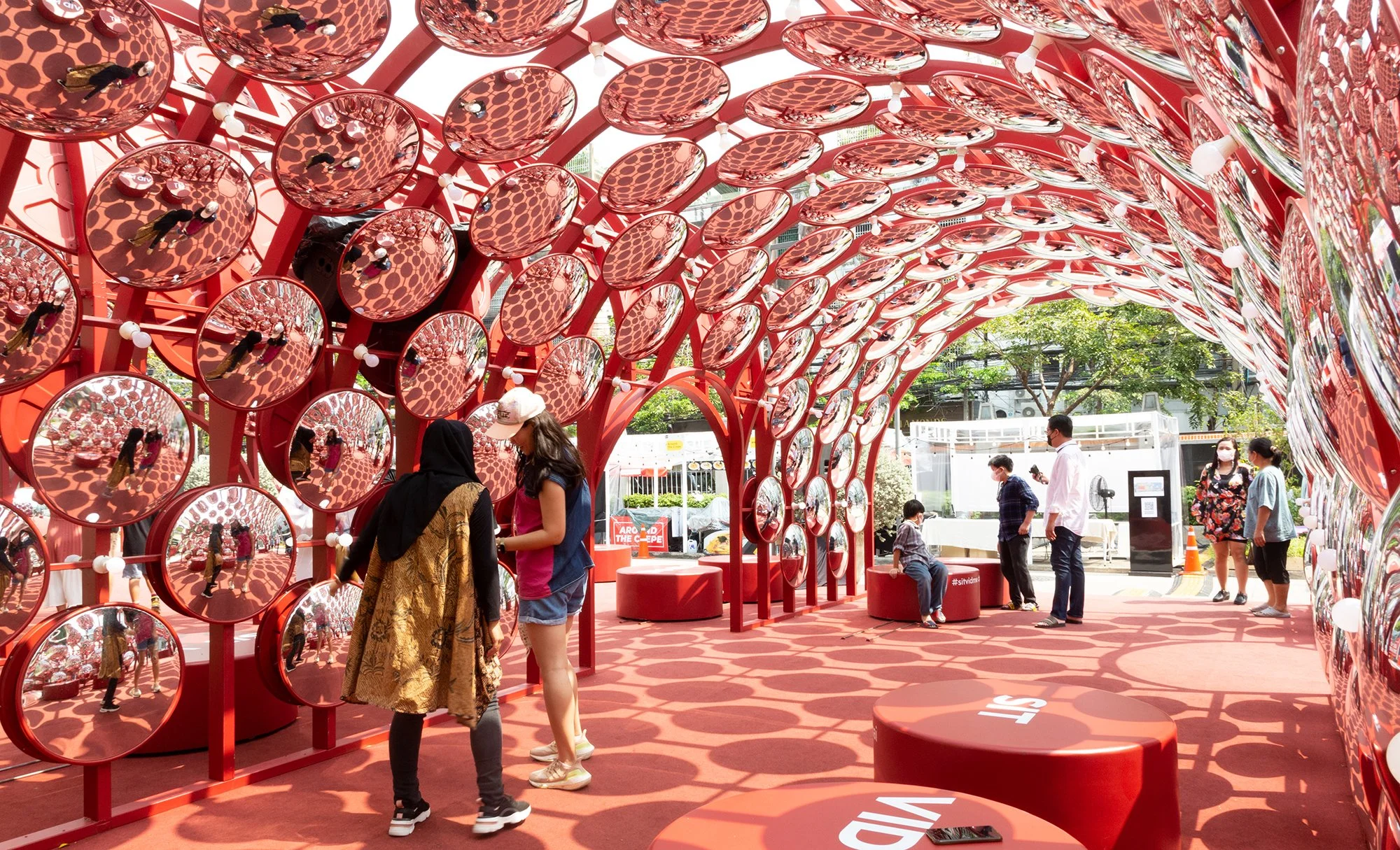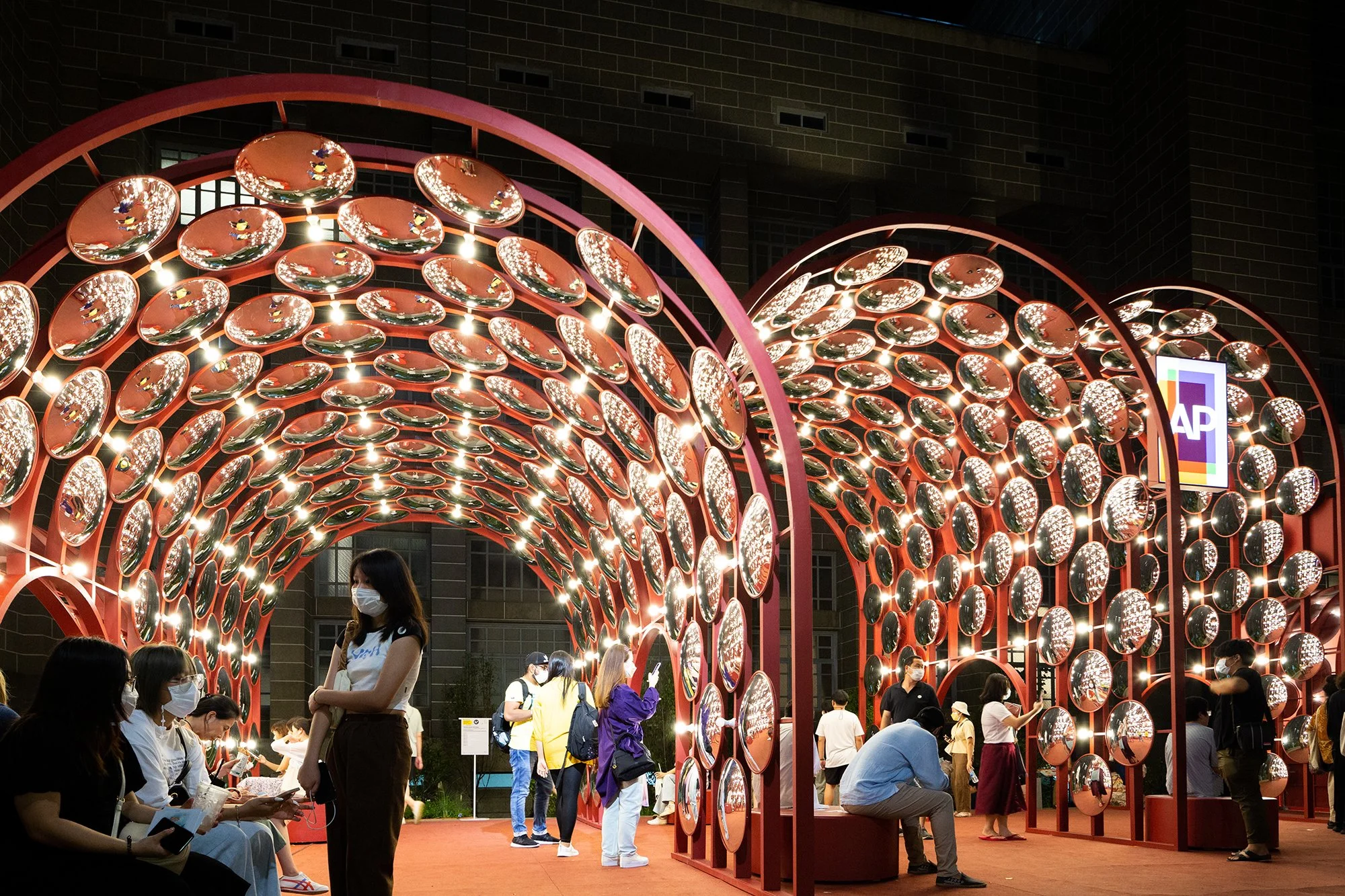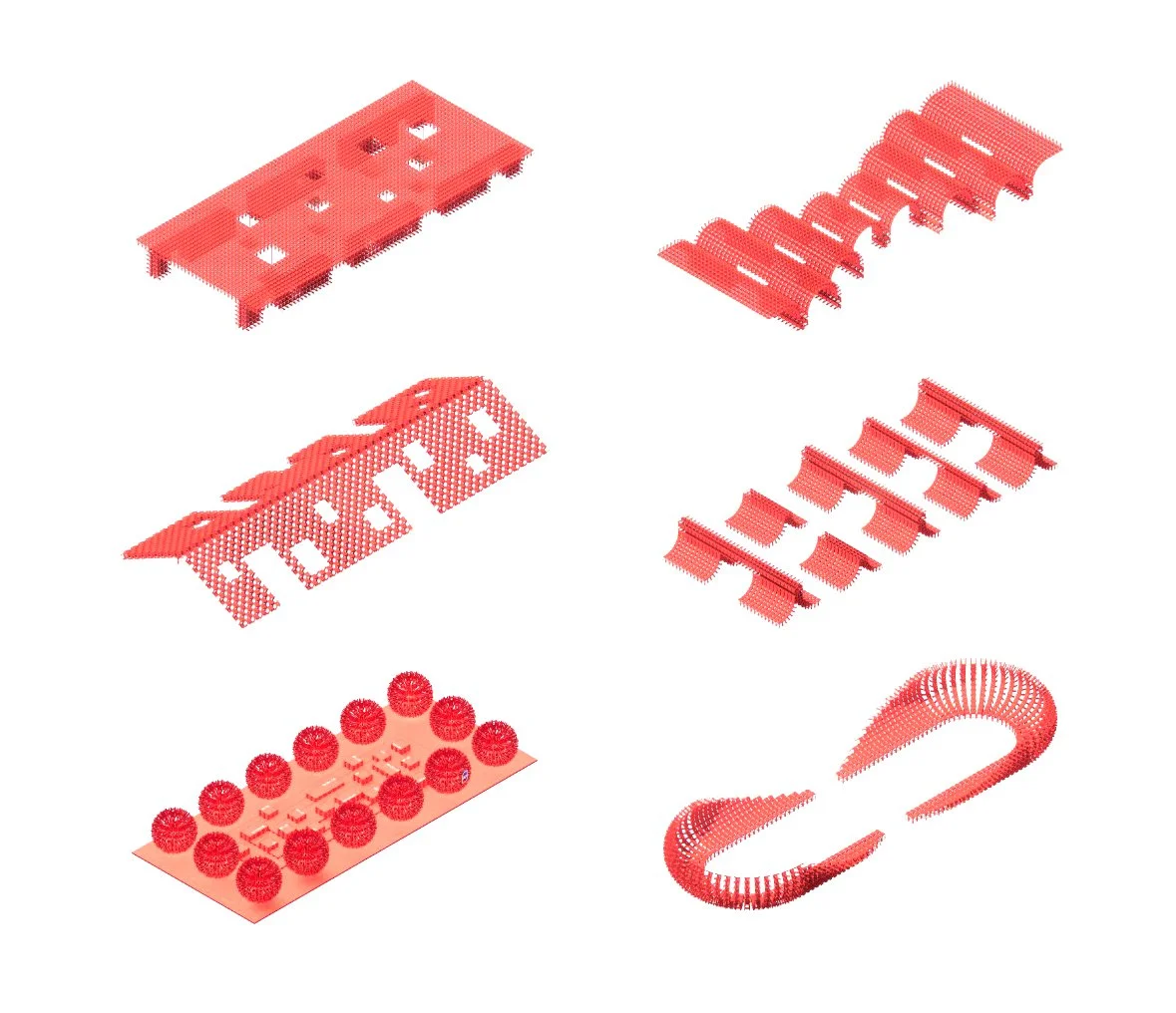AP Sit-Vid-Me at BDW 2023
Location: Bangkok, Thailand
Project Type: Temporary Architecture Design
Size: 100m2
Completion: 2023
Design Team: Pitupong Chaowakul, Kasidis Puaktes
Photograph: Supermachine Studio
Revisiting this project is like flipping through a snapshot of a very particular moment in time—when the world felt paused, yet somehow, ideas kept moving. This was one of those projects born during the thick of the COVID-19 pandemic, under the brief “A Community of the Future,” set by our long-time collaborator, AP (Asian Property).
This was actually our second time designing AP’s pavilion for Bangkok Design Week, and we were thrilled to be invited back. It felt like the client wasn’t just interested in showing off homes and condos (which, let’s be honest, aren’t the most exciting thing to bring to a design festival). Instead, they wanted to engage with something deeper.
The concept this time was rooted in the emotional weight of that moment: isolation. “VID” from COVID had split the world apart—physically, emotionally, socially. But instead of leaning into that distance, we wanted to flip the script. Could we make a space that stitched people back together, even if just briefly?
Everyone was talking about the “New Normal,” but let’s be real—what people missed most was just being together. No screens, no Zoom calls. Just sharing space.
We started with one simple act: sitting. Not just placing chairs around, but creating a shared moment of pause. We played around with various furniture arrangements but they felt too literal, too polite. Then came the traffic mirror—ordinary, industrial, slightly absurd. We loved it. Something about the way it reflects and distorts, the way it makes you look twice—literally and metaphorically.
So we went all in: 732 traffic mirrors, arranged into five arched tunnels, ranging from two to six meters tall. Each tunnel was clad top to toe in mirrors, and inside we placed oversized circular stools on rails that allowed people to glide, perch, shift—alone or together.
The effect? Pure fun and quiet introspection. Visitors moved through the pavilion like curious creatures in a mirrored habitat—sliding, sitting, chatting, and watching themselves from hundreds of angles. It became this odd but joyful social experiment in reflection (both visual and emotional).
It wasn’t a big-budget, high-tech installation. But it captured something: the hunger to reconnect, to laugh at your warped reflection, to sit beside a stranger again. For us, it was a small act of design optimism during a heavy moment in history.
And that’s why it still matters.











